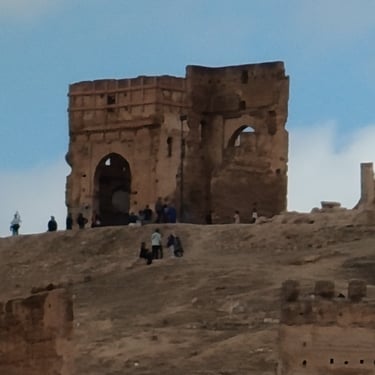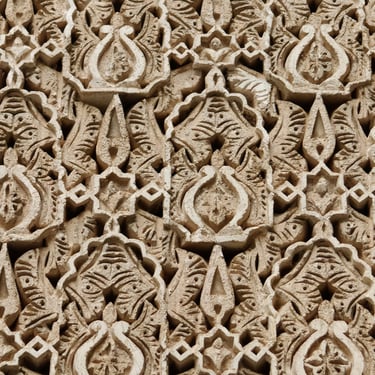Discover Fes with a Certified Local Guide
As a certified local guide, I conduct historical, private, culinary, and heritage tours in Fes, providing a distinctive and enriching experience for all visitors. Join us for a journey you won't forget!


Absolutely fantastic tour experience!
Alice
"
Explore Fes Tours
Discover the rich history and culture of Fes with our personalized guided tours.
🕌 Fez Medina Walking Tour: The Soul of Old Fez
Starting Point: Place R’cif (Rcif Market)
⏰ Suggested start: 9:00 AM
Begin your tour at Place R’cif, one of the main entrances to the ancient medina.
This lively market square is surrounded by produce stalls, spice vendors, and traditional food shops — a perfect place to experience the daily life of Fez locals.
📸 Tip: Climb the nearby terrace café for a great panoramic view of the bustling Rcif area and the surrounding rooftops.
Stop 2: The Dyers’ Quarter – Sbaghine
Walk uphill from Rcif into the Sabbaghine (Dyers) area, where artisans still practice the centuries-old art of hand-dyeing wool and silk.
Brightly colored threads — reds, yellows, and indigos — hang across narrow alleys, creating one of the most photogenic corners of the medina.
💡 Watch: The use of natural dyes like saffron, henna, and indigo for traditional Moroccan textiles.
Stop 3: Seffarine Square (Place Seffarine)
A short walk north brings you to Seffarine Square, the heart of Fez’s metalworking district.
Here, craftsmen known as “Seffarine” hammer sheets of copper and brass into beautiful bowls, teapots, and trays — a tradition unchanged for centuries.
🔊 Soundscape: The rhythmic clanging of metal is one of the signature sounds of the old medina.
☕ Nearby: Try a mint tea at the small café overlooking the artisans at work.
Stop 4: Al Quaraouiyine Mosque and University
Continue uphill to reach Al Quaraouiyine, founded in 859 AD — the oldest existing university in the world.
While non-Muslims cannot enter the mosque, you can admire the stunning courtyard and green-tiled roofs from nearby doorways or terraces.
🏛️ Note: The university was established by Fatima al-Fihri, a woman — a point of great pride in Moroccan history.
Stop 5: Attarine Madrasa & Attarine Alley
Just steps away is the Attarine Madrasa, built in the 14th century. It’s a masterpiece of Marinid architecture, with intricate stucco, carved cedar, and zellij tilework.
After visiting, stroll through Attarine Alley, filled with traditional spice, perfume, and craft shops.
🌿 Smells: Cardamom, saffron, and rose water fill the air.
🎨 Look for: The fine geometric tile mosaics and latticework — hallmarks of Fassi design.
Stop 6: Moulay Idriss II Mausoleum
Head next to the Mausoleum of Moulay Idriss II, the founder of Fez and a revered saint.
Though entry is restricted to Muslims, visitors can admire the beautiful entrance, ornate tiles, and the devotion of locals who come to pray and pay respects.
🙏 Atmosphere: This is one of the most spiritual corners of Fez — silence and respect are appreciated.
Stop 7: Nejjarine Square & Nejjarine Museum
Walk toward Nejjarine Square, one of the most elegant parts of the medina.
The square features a traditional fountain decorated with zellij tiles and surrounded by woodcraft shops.
Next door, visit the Nejjarine Museum of Wooden Arts and Crafts, housed in a restored 18th-century caravanserai.
Inside, you’ll find exquisite examples of Moroccan wooden architecture, tools, furniture, and musical instruments.
🪵 Highlight: The rooftop terrace offers one of the best panoramic views of Fès el-Bali.
Stop 8: Sidi Ahmed Tijani Zawiya
A few minutes’ walk away lies the Zawiya of Sidi Ahmed Tijani, the founder of the Tijaniyya Sufi order.
It’s a major spiritual site for pilgrims from across Africa. Non-Muslims can view the exterior and the decorative gates from outside.
🌙 Tip: The site is particularly lively during religious festivals and Sufi gatherings.
Final Stop: Chouara Tanneries
Finish your tour at the Chouara Tanneries, one of the most famous landmarks of Fez.
From the surrounding terraces, you can observe the traditional leather-tanning process — unchanged since medieval times.
Workers soak animal hides in natural dyes and dry them in colorful stone vats.
👜 Souvenir idea: Genuine leather goods — belts, bags, or slippers — made from Fez’s own tanneries.
Optional Ending
Relax afterward with mint tea or lunch on a rooftop terrace overlooking the tannery, such as Café Tannery or Terrasse de Tannerie.
🗺️ Summary Route Order
Rcif Market → Sbaghine Dyers → Seffarine Square → Al Quaraouiyine → Attarine Madrasa & Alley → Moulay Idriss Mausoleum → Nejjarine Square & Museum → Sidi Ahmed Tijani → Chouara Tanneries
Approx. walking time: 3–4 hours (without long stops)
Best time to visit: Morning to early afternoon (good light, fewer crowds)
FULL DAY
FES CITY TOUR
🌆 Fez Full-Day Heritage Tour – City & Medina
Theme: “From Royal Splendor to Artisan Traditions — The Spirit of Fez”
Duration: Full Day (5 hours)
Type: Combined vehicle & walking tour
Start Point: Hotel , Bab Boujloud , Batha , Rcif
End Point: Chouara Tanneries
🏰 Stop 1 – The Royal Palace (Dar el-Makhzen)
Location: Fez el-Jdid (New Fez)
Highlights:
Majestic golden-bronze doors framed by intricate zellij tiles and carved plaster.
One of the most beautiful examples of Moroccan royal architecture.
Guide Notes:
Introduce the Alaouite dynasty and explain how Fez has served as a royal residence for centuries. The palace is not open to visitors, but the gates themselves represent the height of Moroccan craftsmanship.
Photo Tip:
Best morning light for photos. Capture the contrast between gold doors and blue mosaics.
🕍 Stop 2 – The Jewish Quarter (Mellah) and Ibn Danan Synagogue
Location: Near the Royal Palace
Highlights:
Narrow streets with distinctive balconies and windows.
Ibn Danan Synagogue — one of North Africa’s oldest and most historically significant synagogues.
View of the Jewish Cemetery, known for its white tombs.
Guide Notes:
Discuss the peaceful coexistence between Muslim and Jewish communities in Fez. Explain the historical importance of the Mellah as a trade and cultural hub.
Cultural Note:
Point out the difference in architecture compared to the Islamic medina — outward-facing homes instead of inward courtyards.
🏯 Stop 3 – Southern Fortress (Borj Sud)
Location: Hill overlooking Fez el-Bali
Highlights:
A 16th-century fortress built by the Saadians to control the city.
Spectacular panoramic views of the old medina’s rooftops, minarets, and green-tiled mosques.
Guide Notes:
Use this stop to explain Fez’s geography — the split between Fez el-Jdid (New Fez) and Fez el-Bali (Old Fez). Point out visible landmarks such as the Quaraouiyine Mosque, the tanneries, and the city gates.
Photo Tip:
This is the best viewpoint for photography of Fez.
⚱️ Stop 4 – Cooperative of Pottery and Mosaic
Location: Ain Nokbi area (outside medina walls)
Highlights:
Visit a traditional ceramics and zellij workshop.
Observe artisans shaping clay, hand-painting designs, and cutting tiles for mosaics.
Guide Notes:
Explain the importance of Fez pottery — famous for its cobalt-blue glaze and intricate designs. Visitors can witness the entire process, from clay molding to kiln firing.
Optional:
Shop for authentic ceramics, plates, fountains, and tilework at the cooperative’s showroom.
🍴 Stop 5 – Lunch in a Traditional Riad
Suggested Locations:
Dar Hatim or Riad Rcif for authentic Fez cuisine.
Recommended Dishes:
Chicken lemon tagine, couscous with vegetables, pastilla, and mint tea.
🕌 Medina Walking Tour – Fez el-Bali
🛍️ Stop 6 – Rcif Market (Place R’cif)
Highlights:
One of the liveliest squares in the medina, filled with food stalls, spices, and fresh produce.
The perfect starting point for exploring Fez’s ancient labyrinth.
Guide Notes:
Describe how Fez’s markets are organized by trade, a system dating back to the 9th century.
🧶 Stop 7 – Dyers’ Quarter (Sabbaghine)
Highlights:
Wool and silk threads dyed with natural pigments such as saffron, indigo, and henna.
Vibrant colors strung across narrow lanes — a unique photo opportunity.
Guide Notes:
Explain the natural dyeing process and how craftsmanship is passed down through families.
🔨 Stop 8 – Seffarine Square
Highlights:
Copper and brass artisans working by hand in the open air.
The nearby Al Quaraouiyine Library, recently restored.
Guide Notes:
Point out how Fez’s metalwork remains world-famous. Mention that this area once hosted scholars and bookbinders for the Quaraouiyine University.
🕌 Stop 9 – Al Quaraouiyine Mosque and University
Highlights:
Founded in 859 AD by Fatima al-Fihri, this is the oldest operating university in the world.
Elegant arches, green-tiled roofs, and Andalusian design.
Guide Notes:
While non-Muslims cannot enter, visitors can admire the structure from nearby alleys. Discuss the university’s role in Islamic education and philosophy.
🏫 Stop 10 – Attarine Madrasa & Alley
Highlights:
Exquisite Marinid-era madrasa (14th century) with carved cedar and colorful zellij tiles.
Surrounding Attarine Alley filled with spice and perfume shops.
Guide Notes:
Discuss the spiritual and academic significance of madrasas. Point out geometric tilework and Arabic calligraphy.
⚱️ Stop 11 – Moulay Idriss II Mausoleum
Highlights:
Mausoleum of Fez’s founder and patron saint.
Sacred site for Moroccan pilgrims.
Guide Notes:
Explain Moulay Idriss II’s importance in Moroccan history. Non-Muslims may admire the exterior architecture and colorful tile entrance.
🪵 Stop 12 – Nejjarine Square & Museum of Wooden Arts
Highlights:
Traditional fountain and an 18th-century caravanserai converted into a museum.
Exhibits of wooden architecture, instruments, and crafts.
Guide Notes:
Explain the historical role of caravanserais for merchants and travelers. Don’t miss the rooftop view of the medina.
🕋 Stop 13 – Sidi Ahmed Tijani Zawiya
Highlights:
Center of the Tijaniyya Sufi order.
Revered pilgrimage site for West African followers.
Guide Notes:
Discuss Sufism and its influence on Moroccan spirituality. Non-Muslims can view the decorated gate and listen to the sounds of prayer from outside.
👞 Stop 14 – Chouara Tanneries
Highlights:
The most iconic sight in Fez — ancient tanning pits still using natural dyes.
View the workers from surrounding terraces and see the full leather-making process.
Guide Notes:
Describe how the tanning process hasn’t changed for centuries. Talk about the trade routes that made Fez’s leather famous worldwide.
Tip:
Carry mint to offset the strong odor!
☕ Final Stop – Rooftop Café at the Tanneries
Relax after the tour with Moroccan mint tea overlooking the colorful tanning pits — a perfect end to your Fez discovery.
🗺️ Tour Overview
Route:
Royal Palace → Mellah → Borj Sud → Pottery Cooperative → Rcif → Sbaghine → Seffarine → Al Quaraouiyine → Attarine → Moulay Idriss → Nejjarine → Sidi Ahmed Tijani → Chouara
Type: Vehicle (morning) + Walking (afternoon)
Difficulty: Moderate
Total Duration: Approx. 7–8 hours
Best Season: Spring or Autumn for mild weather
Would you like me to make this version into a professionally formatted Word (.docx) document (like the previous one), labeled as
➡️ “Fez Full-Day City & Medina Tour – Stop-by-Stop Itinerary”?
I can include clear headings, dividers, and consistent layout for printing or sharing with guests.
HALF DAY
FEZ CITY TOUR
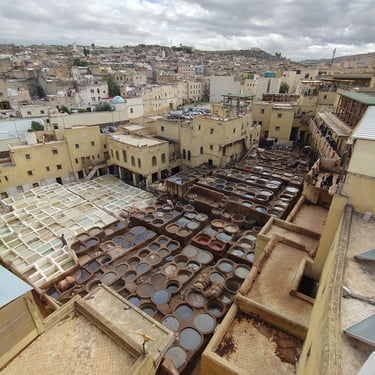
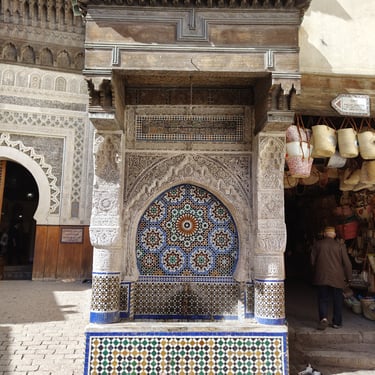
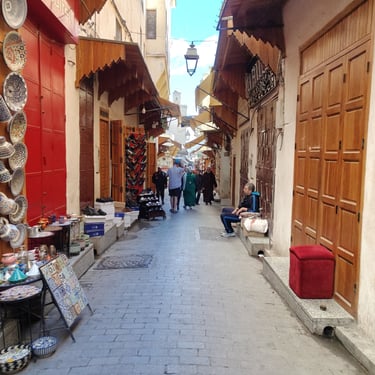
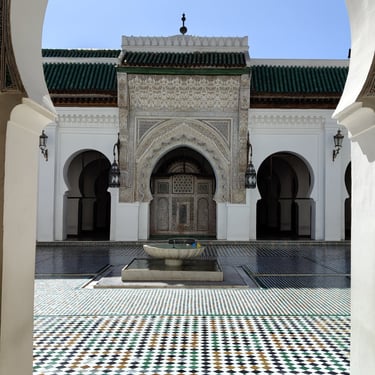

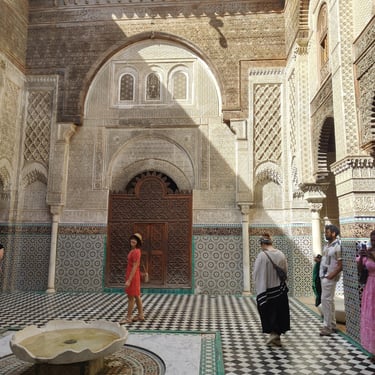

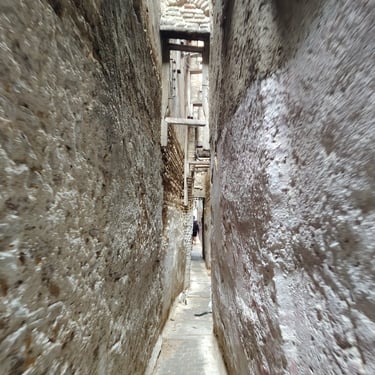


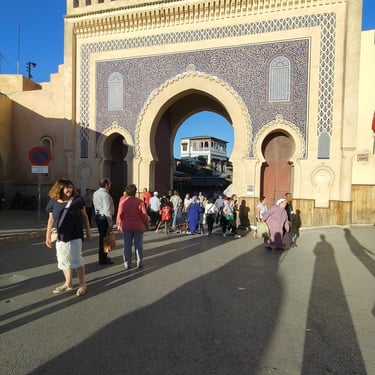
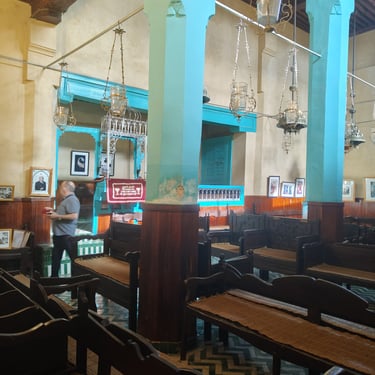

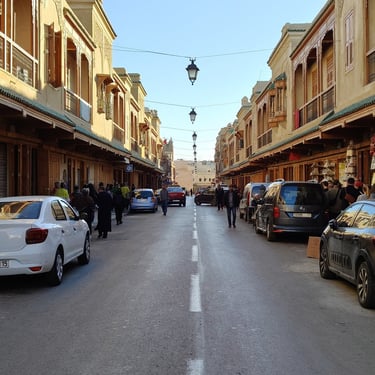
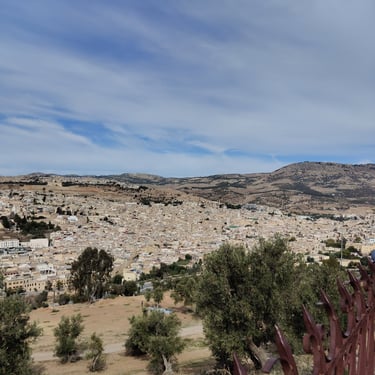
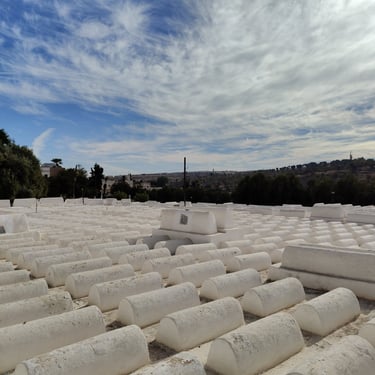
CUSTOMISE YOUR FES CITY TOURS
Explore Fes with historical and cultural experiences led by experts.
